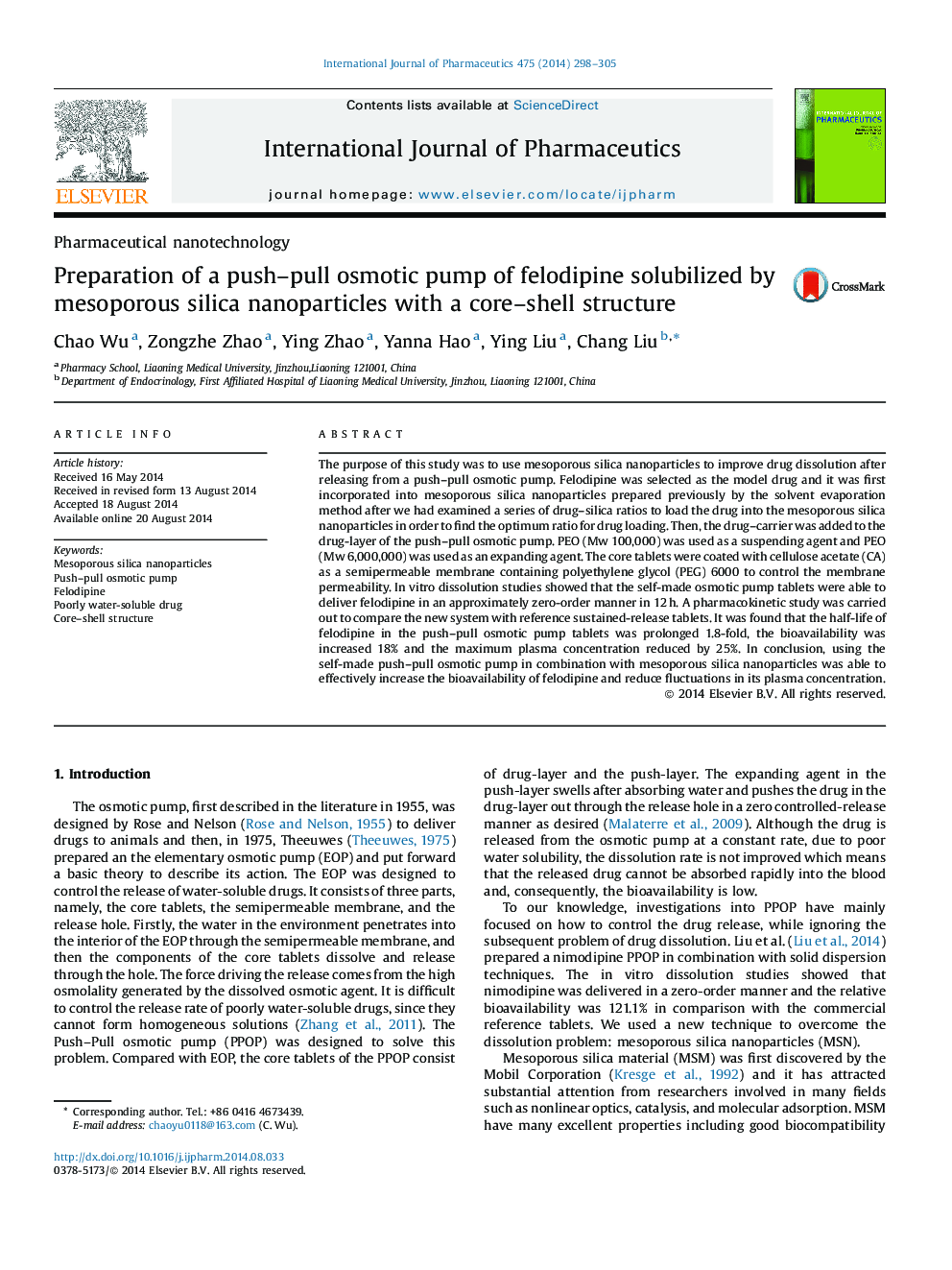| Article ID | Journal | Published Year | Pages | File Type |
|---|---|---|---|---|
| 2501681 | International Journal of Pharmaceutics | 2014 | 8 Pages |
The purpose of this study was to use mesoporous silica nanoparticles to improve drug dissolution after releasing from a push–pull osmotic pump. Felodipine was selected as the model drug and it was first incorporated into mesoporous silica nanoparticles prepared previously by the solvent evaporation method after we had examined a series of drug–silica ratios to load the drug into the mesoporous silica nanoparticles in order to find the optimum ratio for drug loading. Then, the drug–carrier was added to the drug-layer of the push–pull osmotic pump. PEO (Mw 100,000) was used as a suspending agent and PEO (Mw 6,000,000) was used as an expanding agent. The core tablets were coated with cellulose acetate (CA) as a semipermeable membrane containing polyethylene glycol (PEG) 6000 to control the membrane permeability. In vitro dissolution studies showed that the self-made osmotic pump tablets were able to deliver felodipine in an approximately zero-order manner in 12 h. A pharmacokinetic study was carried out to compare the new system with reference sustained-release tablets. It was found that the half-life of felodipine in the push–pull osmotic pump tablets was prolonged 1.8-fold, the bioavailability was increased 18% and the maximum plasma concentration reduced by 25%. In conclusion, using the self-made push–pull osmotic pump in combination with mesoporous silica nanoparticles was able to effectively increase the bioavailability of felodipine and reduce fluctuations in its plasma concentration.
Graphical abstractFigure optionsDownload full-size imageDownload high-quality image (128 K)Download as PowerPoint slide
